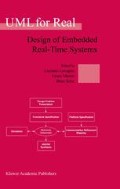Abstract
Performance is critical to the success of today’s software systems. However, many software products fail to meet their performance objectives when they are initially constructed. Fixing these problems is costly and causes schedule delays, cost overruns, lost productivity, damaged customer relations, missed market windows, lost revenues, and a host of other difficulties. This chapter presents software performance engineering (SPE), a systematic, quantitative approach to constructing software systems that meet performance objectives. SPE begins early in the software development process to model the performance of the proposed architecture and high-level design. The models help to identify potential performance problems when they can be fixed quickly and economically.
Access this chapter
Tax calculation will be finalised at checkout
Purchases are for personal use only
Preview
Unable to display preview. Download preview PDF.
References
P. C. Clements and L. M. Northrup, “Software Architecture: An Executive Overview,” Technical Report No. CMU/SEI-96-TR-003, Carnegie Mellon University, Pittsburgh, PA, February, 1996.
C. U. Smith, Performance Engineering of Software Systems, Reading, MA, Addison-Wesley, 1990.
C. U. Smith and L. G. Williams, Performance Solutions: A Practical Guide to Creating Responsive, Scalable Software, Boston, MA, Addison-Wesley, 2002.
L. G. Williams and C. U. Smith, “PASASM: A Method for the Performance Assessment of Software Architectures,” Proceedings of the Third International Workshop on Software and Performance (WOSP2002), Rome, Italy, July, 2002, pp. 179–189.
P. Kruchten, The Rational Unified Process: An Introduction, Reading, MA, Addison-Wesley, 1999.
I. Jacobson, G. Booch, and J. Rumbaugh, The Unified Software Development Process, Reading, MA, Addison-Wesley, 1999.
B. W. Boehm, “Verifying and Validating Software Requirements and Design Specifications,” IEEE Software, vol. 1, no. 1, pp. 75–88, 1984.
M. Schwartz, Telecommunications Networks: Protocols, Modeling and Analysis, Reading, MA, Addison-Wesley, 1988.
ITU, “Criteria for the Use and Applicability of Formal Description Techniques, Message Sequence Chart (MSC),” International Telecommunication Union, 1996.
Author information
Authors and Affiliations
Editor information
Editors and Affiliations
Rights and permissions
Copyright information
© 2003 Kluwer Academic Publishers
About this chapter
Cite this chapter
Smith, C.U., Williams, L.G. (2003). Software Performance Engineering. In: Lavagno, L., Martin, G., Selic, B. (eds) UML for Real. Springer, Boston, MA. https://doi.org/10.1007/0-306-48738-1_16
Download citation
DOI: https://doi.org/10.1007/0-306-48738-1_16
Publisher Name: Springer, Boston, MA
Print ISBN: 978-1-4020-7501-8
Online ISBN: 978-0-306-48738-5
eBook Packages: Springer Book Archive

